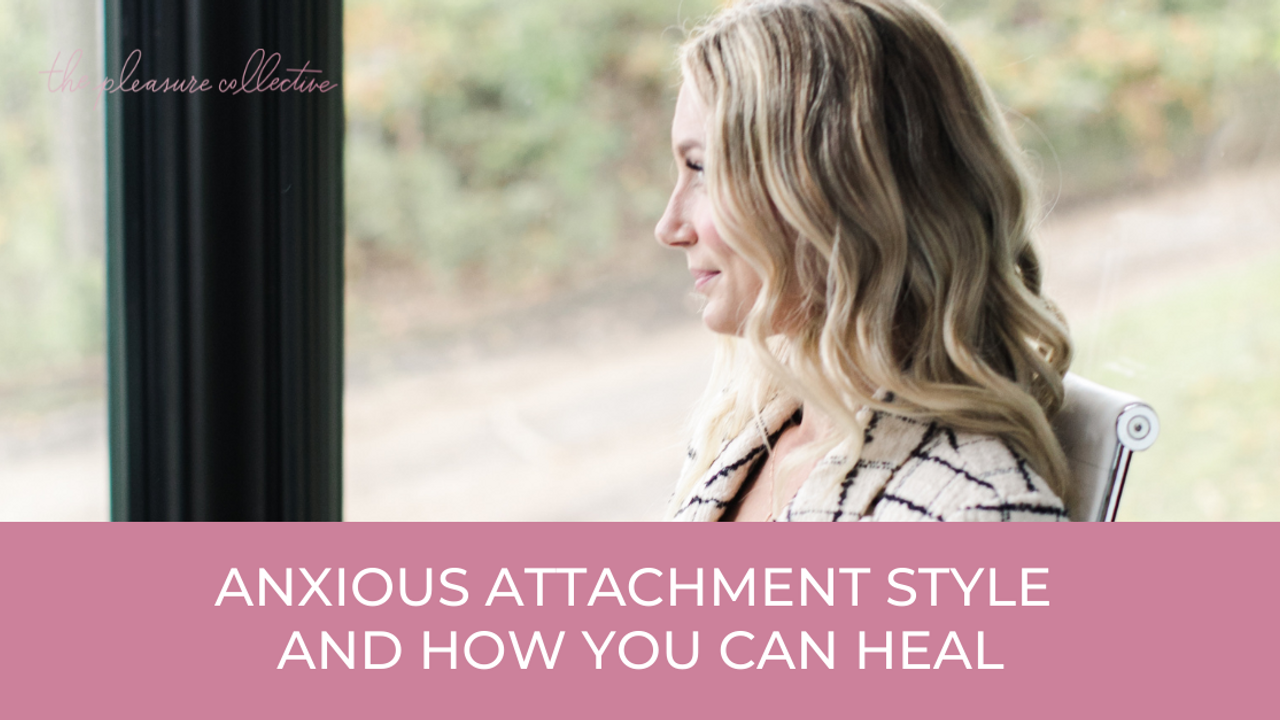Anxious Attachment Style and How You Can Heal

Attachment styles have been getting a lot of attention recently. In broad terms, attachment styles are a summary of patterns and behaviours that stem from how you were raised. These patterns can end up directly affecting your relationships as an adult when you don’t take the time and do the work to recognize and heal them. When an attachment style is present and impacting your relationships, it takes effort, introspection, and support to heal and repair it.
Signs You Are Struggling with Attachment
There are many signs that may indicate attachment patterns are showing up and impacting your current relationships:
- You have the same fight with your partner on repeat
- You struggle to ask for help
- You’re succeeding in other aspects of life like your career, but your relationship is suffering
- You’re constantly dating people who seem perfect at first but then the honeymoon period ends and you’re left feeling resentful
- Sex isn’t living up to your expectations
- You struggle with jealousy and anxious thoughts in your relationship
If any of these sound like you, your attachment patterns could be showing up and impacting your relationships today. But, what is all the hype about attachment? Attachment styles go all the way back to the way we were raised, how we became attached to the parents or caregivers in our lives, and how we learned to receive and experience love and connection.
Caregivers, especially when we are young, provide support, comfort and regulation. When that support is interrupted or inconsistent, we can start to develop insecure attachment. Different kinds of attachment lead to different relationship patterns later in life.
Anxious Attachment
There are four main attachment styles, but one of the styles I commonly see among successful women struggling to find the intimacy and connection they are seeking in their relationships is anxious attachment.
Anxious attachment style stems from inconsistent security from your parents or caregiver as a child. Oftentimes this attachment style develops from not having your emotional needs met on a regular basis. You may have had to earn the support you needed through chores or good grades, or you may have had to exaggerate your distress in order to gain attention or support. This style is rooted in the fear of abandonment and the insecurity of being underappreciated or unworthy. It does not mean you had parents or caregivers that were purposefully neglectful, but it may be a product of having parents who were busy, or just simply the common parenting style of the time.
An anxious attachment style could show up in your present day relationships in different ways. In some cases is the overwhelming feelings of jealousy, clinginess or fear of being alone/abandoned, other times it shows up by being an over-giver or over-doer.
We see this type of attachment style a lot in successful women - doctors, lawyers, executives, etc.. It’s usually because control is their safety - they don’t have to worry about being abandoned if they’re the ones in control. They’re also the fixers or the over-doers in the relationship. They try to resolve any fight immediately or come up with a solution right away because sitting in discomfort makes them uncomfortable.
Do you have a hard time sitting with uncertainty or turmoil in your relationships?
Healing Your Anxious Attachment
The good news - it’s not too late to heal your anxious attachment style. You can repair your attachment wounds and move towards secure attachment with your current partner, if they are willing, or with a future partner.
To start the healing process, you need to understand your attachment style, and how it affects your relationships. Understanding why you may act in a certain way is the first step in breaking that cycle. Self-reflection is key when determining the work that needs to be done to help you and your relationship.
The next step is starting to implement changes in your behaviour and how you react to certain situations. As an over-giver, or fixer, you may be used to wanting to address issues as soon as they arise. However, when working to heal your anxious attachment, you may find it better to wait and take a breath before reacting to a situation. Take the time to reflect and analyze before making an informed decision/reaction.
Anxious attachment is a very common attachment style so it’s not anything to be ashamed of, and it is much more common that people experience pieces or some aspects of anxious attachment rather than being a textbook definition of it! Talking to a professional about your anxious attachment is a great way to start your healing process as well or joining a group of women also seeking support while they heal their relationships and learn to accept intimacy in their lives.
Support For Women Healing
The Feminine Mentorship program helps women with their anxious attachment style heal and better themselves and their relationships. We take a look at how these attachment styles are showing up in your relationships today, and the work you need to do to repair the ruptures and the repeated cycles you’ve found yourself in. The Feminine Mentorship helps to revitalize your relationships or find that relationship you’ve always desired.
Listen to episode #29 of The Pleasure Principles Podcast on Apple or Spotify to learn more about anxious attachment style and how you can heal.


